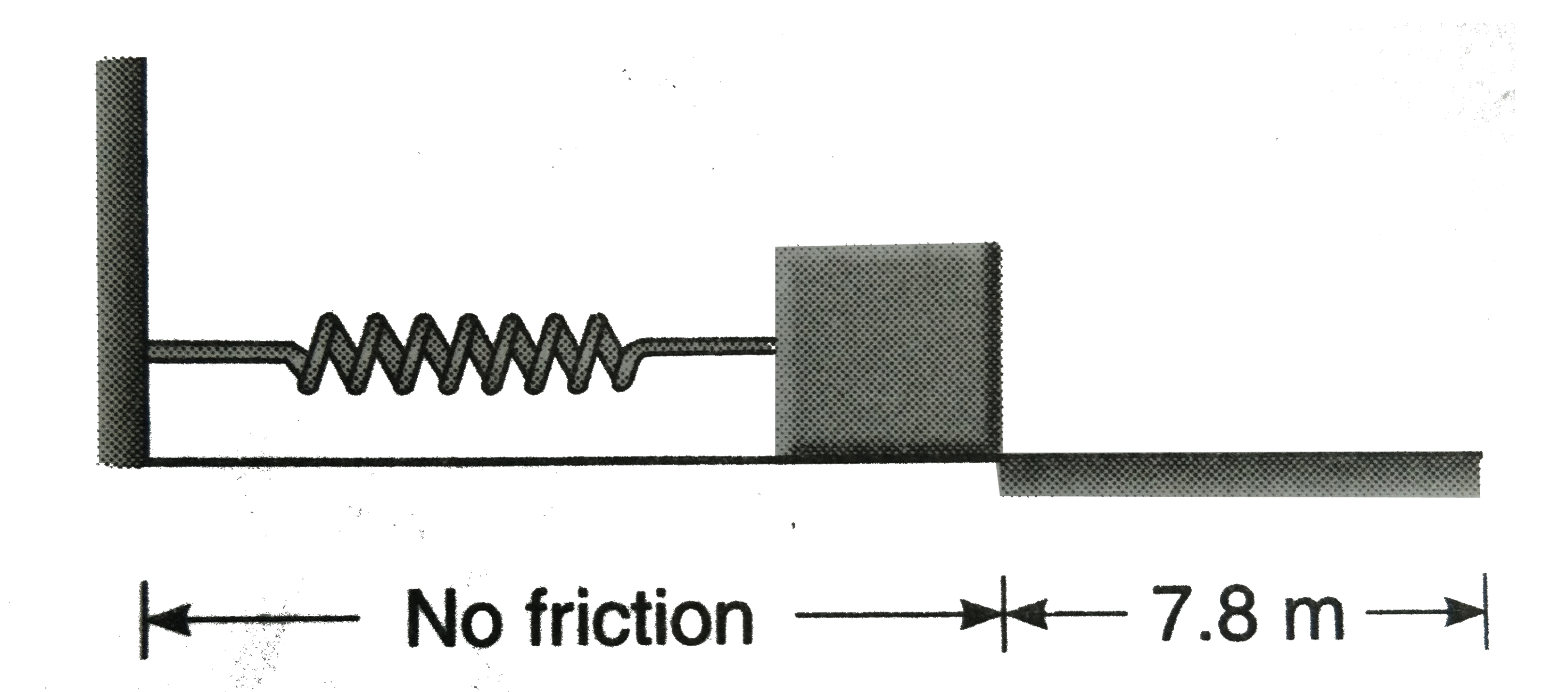Figure shows, a 3.5kg block accelerated by a compressed spring whose spring constant is 740N/m. After, leaving the spring at the spring' s relaxed length, the block travels over a horizontal surfce, with a coefficient of kinetic friction of 0.25, for a distance of 7.8m before stopping. (g=9.8m/s2).
 .
.
(a) What is the increase in the thermal energy of the block-floor system ?
(b) What is the maximum kinetic energy of the block ?
(c) Through that distance is the spring compressed before the block begins to move ?
The correct Answer is:A, B, C, D
(a) Thermal energy =Work done against friction
=μkmgd
=(0.25)(3.5)(9.8)(7.8)J
=66.88J
(b) Maximum kinetic energy
=work done against fricion
=66.88J
(c) 12kx2m=maximum kinetic energy
12×640×x2m=66.88cm
xm=0.457m=45.7cm
Similar Questions
A block of mass m moving at a speed v0 compresses a spring of spring constant k as shown in the figure. Find (a) the maximum compression of spring and (b) speed of the block when the spring is compressed to half of maximum compression.
View SolutionA block of mass m moving at a speed v compresses as spring thrugh a distance x before its speed is halved. Find the spring constant of the spring.
View Solution
Knowledge Check
A 0.25kg block oscillates on the end of the spring with a spring constant of 200N/m. If the oscillation is started by elongating the spring 0.15m and giving the block a speed of 3.0m/s, then the maximum speed of the block is
A0.13m/sB0.18m/sC3.7m/sD5.2m/sA 2.0 - kg block executes SHM while attached to a horizontal spring of spring constant 200N/m. The maximum speed of the block as it slides on a horizontal frictionless surface is 3.0m/s.
What is the amplitude of the block's motion?A0.15 mB0.45 mC0.30 mD0.60 mIn a horizontal spring-block system force constant of spring is k = 16N/m, mass of the block is 1 kg. Maximum kinetic energy of the block is 8J. Then
Aamplitude of osciallation is 1mBat half the amplitude, potential energy stored in the spring is 2J.Cat half the amplitude kinetic energy is 6JDangular frequency of oscillation is 16 rad/s
A block of mass m moving at a speed v compresses a spring throgh a distance x before its speed is halved. Find the spring constant of the spring.
View SolutionA block of mass m is attached to one end of a mass less spring of spring constant k. the other end of spring is fixed to a wall the block can move on a horizontal rough surface. The coefficient of friction between the block and the surface is μ then the compession of the spring for which maximum extension of the spring becomes half of maximum compression is .
View SolutionA block with mass 0.50kg is forced against a horizontal spring of negligible mass , compressing the spring a distance of 0.20m (figure). When released, the block moves on a horizontal table top for 1.00N/m. What is the coefficient of kinetic friction μk, between the block and the block and the table?

View SolutionA block of mass 2.0 kg is given an initial speed along the floor towards a spring as shown. The coefficient of kinetic friction between the floor and the block is 0.4 and force constant of the spring is 5.6×103 N/m. The block compresses the spring by 10cm before it stops for a moment. What is the initial speed (m/s) of the block?

View SolutionA 2.0 - kg block executes SHM while attached to a horizontal spring of spring constant 200N/m. The maximum speed of the block as it slides on a horizontal frictionless surface is 3.0m/s.
How long does the block take to complete 7.0 cycles of its motion?
View Solution
